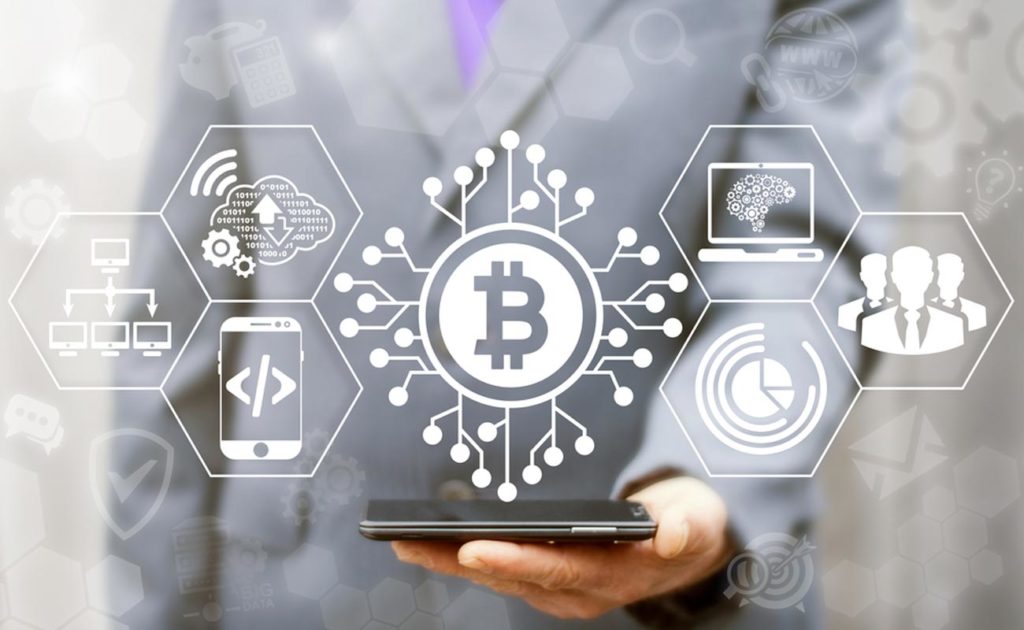What is Blockchain Technology?
Blockchain Technology came into picture first when Bitcoin was first released by Satoshi Nakamoto. Before him (or her), nobody could solve the common problem pertaining to all virtual currencies – the problem of double spending. Using blockchain, satoshi solved this problem by making a decentralized network of participants wherein the network itself ensured that funds are not spent more than once without the need for a central authority
In simple terms, as the name indicates, blockchain is a chain of blocks that contain information in such a manner that the data is almost immutable.
It is a distributed ledger which helps to record transactions and tracking assets. Being distributed, all the participants in the blockchain network have a copy of the blockchain and the ledger is open to anyone.
Though it may seem complex to understand the fundamental values of the blockchain, the following example will make everything clear.
A popular analogy used to explain the behavior of blockchain is that of Google Docs.
Before Google Docs, if people working on the same project wanted to share files together, they would send one version of the MS Word document and then wait for the other person to make the required changes and then return it back.
Until the person returns the updated copy back, you cannot make further changes which means that you are locked from accessing the document.
That is how databases also work today – two owners cannot update the same database at once. Rather, one has to wait for the other person to finish. Even banks transfer money in a similar fashion. They briefly lock access to particular accounts while they execute the transfer and when the transfer is executed, then they open the access again.
Imagine Google Docs now. All the parties involved in a particular project can have access to the same document at the same time and can effectively see all the changes that are being made by anyone on the team.
Each member can continuously verify the changes that are being made to the document.
This is what the blockchain essentially is. All the participants (nodes) in a network have a copy of the blockchain (or the ledger) so that when the changes are made, they can be instantly verified by achieving a consensus amongst the group members.
Stay informed with daily updates from Blockchain Magazine on Google News. Click here to follow us and mark as favorite: [Blockchain Magazine on Google News].
editor's pick
Get Blockchain Insights In Inbox
Stay ahead of the curve with expert analysis and market updates.
latest from tech
Disclaimer: Any post shared by a third-party agency are sponsored and Blockchain Magazine has no views on any such posts. The views and opinions expressed in this post are those of the clients and do not necessarily reflect the official policy or position of Blockchain Magazine. The information provided in this post is for informational purposes only and should not be considered as financial, investment, or professional advice. Blockchain Magazine does not endorse or promote any specific products, services, or companies mentioned in this posts. Readers are encouraged to conduct their own research and consult with a qualified professional before making any financial decisions. The featured image used is just a creative depiction of the title and it does not intend to hurt sentiments of any person or institution. If it hurts anyone sentiments, please do not hesitate to reach out to Blockchain Magazine.

 Bitcoin
Bitcoin  Ethereum
Ethereum  XRP
XRP  Tether
Tether  Solana
Solana  USDC
USDC  Dogecoin
Dogecoin  Cardano
Cardano  Lido Staked Ether
Lido Staked Ether  TRON
TRON  Wrapped Bitcoin
Wrapped Bitcoin  Chainlink
Chainlink  Wrapped stETH
Wrapped stETH  Avalanche
Avalanche  Sui
Sui  Stellar
Stellar  Litecoin
Litecoin  Toncoin
Toncoin  Shiba Inu
Shiba Inu  LEO Token
LEO Token  Hedera
Hedera  USDS
USDS  Hyperliquid
Hyperliquid  Polkadot
Polkadot  WETH
WETH  MANTRA
MANTRA  Bitcoin Cash
Bitcoin Cash  Bitget Token
Bitget Token  Ethena USDe
Ethena USDe  Wrapped eETH
Wrapped eETH  Uniswap
Uniswap  Monero
Monero  NEAR Protocol
NEAR Protocol  Pepe
Pepe  WhiteBIT Coin
WhiteBIT Coin  Aave
Aave  Ondo
Ondo  Bittensor
Bittensor  Aptos
Aptos  Internet Computer
Internet Computer  Dai
Dai  Official Trump
Official Trump  Mantle
Mantle  Ethereum Classic
Ethereum Classic  Tokenize Xchange
Tokenize Xchange  OKB
OKB  Gate
Gate  Sonic (prev. FTM)
Sonic (prev. FTM)  sUSDS
sUSDS 

